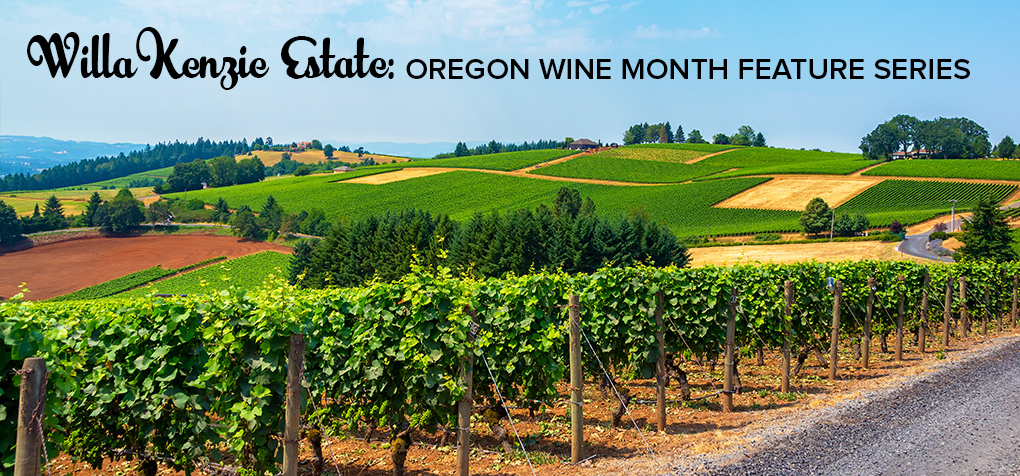Oregon Wine: A Q&A with WillaKenzie Winemaker Erik Kramer
May 17, 2017

Many say that winemaking is part art, part science. It’s the latter part that really resonates with WillaKenzie Estate’s winemaker Erik Kramer, who pegs himself as a “science geek.” With the initial plan of becoming a high school science teacher, Kramer fell in love with geology during his college studies and jumped into that field of work following graduation. However, after seven years in that industry and his wife’s career relocation to Seattle, Kramer felt it was time to make a change. 
Always keen to food and wine, Kramer took a part-time job at Chateau St. Michelle in Washington, per his wife’s recommendation. “I was immediately drawn to the production and I did a couple of harvests up in Washington, then decided to go back to school and get some formal training in viticulture and enology,” Kramer said.
Following his second round of education, Kramer and his wife moved to New Zealand for a year and a half before settling down in the Willamette Valley in 2004. They’ve been there ever since, making Kramer an expert in Oregon wine and its history.
Breakthru caught up with Kramer about his recent move to WillaKenzie Estate, his lengthy experience in Oregon wine and where the region is headed.
You’ve been in the Willamette Valley for nearly 15 years. How have you seen Oregon wine evolve?
Erik Kramer: The quality of wine certainly continues to improve. Wine quality around the world continues to just get better as we learn more collectively about viticulture, enology and what to do. With the rate at which information can be shared now, things happen much faster, so wine quality has continued to get better in the Willamette valley. Momentum in Oregon is hot, and I’m stoked to be on that train while it’s rolling quickly. There’s a lot more outside interest in the last few years, a lot more investment – the Jackson Family made a big push into Oregon, the Jadot Family. It’s great to be part of it when it’s reaching its heyday. It’s become more competitive for young winemakers who really want go get into the region, because it’s a really great place to be.
What advice you would give to young winemakers looking to make it in Oregon wine?
Be patient and stick with it, and don’t go from vintage to vintage. Don’t go from northern hemisphere to southern hemisphere. Find a producer that you respect and go to work for them, and do whatever it is you need to do. Realize that good things can happen, and it’s worth the wait.
What makes Oregon wines unique in your opinion?
It really comes back to that best of both worlds thing. If I’m describing Pinot Noir to someone who hasn’t had Pinot Noir from Willamette Valley before, “Oregundian” is a word that I like to use. It conveys a message that we get that structure, that focus, that tension, that minerality, but we also have that healthy dose of opulent fruit. So you really have this best of both worlds – I can have my cake and eat it, too.
Tell us about WillaKenzie’s portfolio.
The Gisèle is kind of the entryway into the WillaKenzie Pinot Noir portfolio – it’s meant to be a little more approachable in style, but still reflects the nuances of our estate-grown vineyards. We have a really nice number of other Pinot Noirs that are perhaps a little more individual parcel-focused. I’ve got a broad range of single-vineyard wines with names like Aliette and Kiana and Pierre Léon – these are all named after the family members. The winery was founded by Bernie and Ronni Lacroute – and they laid the foundation for success, and then the Jackson Family saw that foundation. For me coming from a place like Domaine Serene, it was a big decision to make a career change like that. But great wines come from great places, and to get a chance to work with a palate like the WillaKenzie Estate, it’s a really fantastic vineyard with wonderful potential. I like spending a lot of time in the field – I think the more you know your site, the more you learn how to make wine around it. You look forward to getting to know your new “children.” You spend more time thinking about the areas that need the most attention. If something’s going well, then don’t worry about it too much. Its fine just let it do its own thing. For me, with wines and winemaking, I think a lot about, “What am I going to do to make this taste better? What am I going to do right now?”
How has your background in science affected your winemaking approach?
I can get very clinical, and I like to focus a lot of time on solving problems. If there’s something that I’m frustrated with, then I have a tendency to focus on it like a laser and will work on it until I’m happy with it. And then conversely, if I’ve got parcels or blocks that I think are just great, it’s just really a matter of just getting out of the way and giving a property its opportunity to show its full potential and just elevate it. I think for the WillaKenzie wines, one of the things that’s important to me is to maintain that level of intensity and opulence and expression that the site has, but then take that seamlessness to another level to create really refined and balanced wines.
What’s next for WillaKenzie and Oregon wine as a whole?
For WillaKenzie, I’d like to build on the foundation of success and take it as far as we possibly can. To come back to that seamlessness, for me, if you can produce wines that are ethereal – wines that can have intensity, but be effortless at the same time – if we can do that with WillaKenzie, that would be really great. And that’s where I’d love to be able to take them. But also what’s hot for Oregon is Chardonnay. I had the great fortune of working with some pretty terrific Chardonnay when I was at Domaine Serene, and we’ve now got a significant amount of acreage going in within the Jackson Family portfolio, which I’ll have access to, and that will be super exciting. I think it would be really fabulous to be having these same types of discussions 10 years from now where we’re using Oregon Chardonnay and Oregon Pinot Noir in the same sentence – that would be the bomb for me!